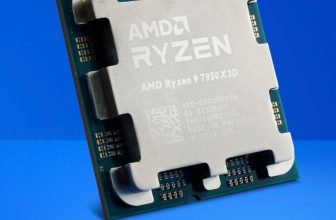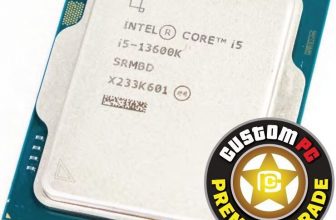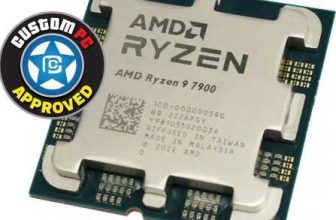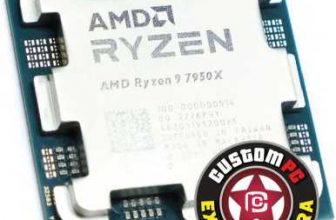Ryzen Threadripper 1950X Review

There are simply no words—we’re blown away.
Ryzen Threadripper 1950X – Amazingly, AMD ups the ante again right Now, Intel ought to be asking AMD what the hell it’s making that glue out of, because this thing is amazing. A vast swathe of the tech community has long had a hunch that something bigger was creeping over the horizon from the plucky red underdog, and it hasn’t been disappointed. Ryzen hit a very impressive mark with its launch, but lacked a lot of the high-end features that Intel’s X99 platform brought to the table. Its lack of PCIe lanes, no quad-channel memory support, and a slightly underwhelming chipset made the platform more akin to mainstream, while the number of cores cemented the 7 series at the very top of our PC rendering wish list.
Fast-forward five months, and we’ve been graced with what can only described as a monster. Especially if you’re in the market for a professional grade workstation setup. In short, Threadripper is incredible. The 16 cores harbored inside its CPU die are unlike anything we’ve ever seen. Think of this as two Ryzen 7 1800Xs, working in tandem inside a single CPU. AMD wasn’t joking when it announced its infinity fabric, and the similarities between that top-end mainstream core and this mighty monster are more than just in name.
But before we delve into the heady heights of performance, let’s talk about the socket installation process, because it’s a doozy. This is the first consumer AMD processor we’ve seen that doesn’t run off the pin grid array standard. Based on EPYC server chips, we’re greeted with a sight we usually associate with Intel: pins, lots of them—4,094, in fact. Because it’s so large, each chip needs to be held securely in place. To install your Threadripper, you unscrew three Torx screws, which release a spring-loaded retention bracket. Once past that, you lift up another bracket, with a protective socket cover inside. You slide that cover up and out of the internal bracket, and slip your shiny new Threadripper CPU (on its included orange tray) into the bracket, before gently lowering the internal bracket back down into position, and resecuring the top bracket.
Right, OK, performance. Let’s get to the good stuff. So, by default, Threadripper runs at a max turbo of 3.7GHz across all 16 of its cores. What that equates to in the real world is stock scores of 3,000 points in Cinebench R15, with 167 in single-core mode. Fry Render wrapped up its ray-tracing in 84 seconds, and Tech Arp’s X264 pulled in a staggering 63.44fps. Gaming was a mixed bag. By default, Threadripper, with AMD’s Master Utility installed on desktop, has two modes: your standard creative mode, with all 16 cores active, and memory set in UMA (Uniform Memory Access) mode, or “gaming mode,” with eight cores active (overclocked to 4.1GHz), and with the memory running in NUMA (non-UMA). In creative mode, all our tests performed as we expected. Atillacame in at 35fps, Far Cry Primal at 75fps, Tomb Raider actually bested all of our other processor tests at 44fps, and Deus Ex, well, that’s still murderously slow at 13fps—same across both Intel and AMD.
What really blew us away, though, was how easy it was to overclock. We did some seriously vigorous testing using our usual methodology, and tried something a little more basic, too: Set the CPU Ratio to 40 in the BIOS, disabled “Spread Spectrum,” tweaked the VRMs to operate at “Extreme,” headed to desktop, ignored voltage, and boom! 4.0GHz across all 16 cores. We saw a Cinebench R15 score of 3,448 points, and X264 smashed in at 73.4fps—a 15 percent increase in performance. Stunning.
How can we sum up Threadripper? It’s a tough one. It’s incredible, no doubt, its pricing is phenomenal, and it can game just as well as any of the other Ryzen parts we’ve tested. Couple that with its astronomical computational performance, and stunning overclocking capabilities, and it’s unlike any other.
zak storey
AMD Ryzen Threadripper 1950X SPECIFICATIONS
| Base Clock | 3.4GHz |
| Turbo Clock | 4.0GHz |
| Cores | 16 |
| Threads | 32 |
| Lithography | 14nm |
| Cache | L3 40MB |
| Memory Support | 128GB DDR4 |
| Memory Channels | 4 |
| Max PCIe Lanes | 64 |
| TDP | 180W |
BENCHMARKS
| AMD Ryzen 7 1950X | Intel Core i9-7900X | |
| X264 Benchmark (fps) | 63.44 | 45.12 |
| Cinebench R15 Single (Index) | 167 | 180 |
| Cinebench R15 Multi (Index) | 3,012 | 2,218 |
| Fry Render (Seconds) | 84 | 94 |
| AIDA64 Memory Latency (Nanoseconds) | 87.6 | 71.8 |
| Total War: Atilla (fps) | 35 | 41 |
| Far Cry Primal (fps) | 75 | 77 |
| 3DMark: Fire Strike (Index) | 18,898 | 18,302 |
| Maximum OC (GHz) | 4.0 | 4.6 |
| Cinebench R15 Multi OC (Index) | 3,448 | 2,466 |
Best scores in bold. Our test bed consists of an Asus X370 Crosshair VI Hero, an Asus Maximus IX Hero, 16GB (2x 8GB) of Corsair Dominator Platinum DDR4, an Nvidia GeForce GTX 1080, and a 500GB Samsung 850 Evo.
When you purchase through links on our site, I may earn an affiliate commission. Here’s how it works.







